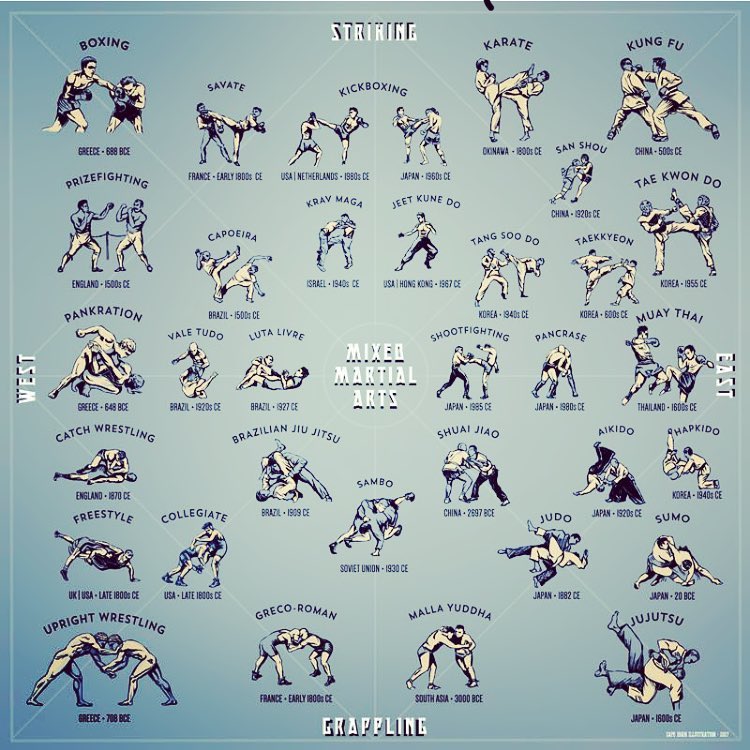Deciphering The Enigma Of Several Fighting Style Techniques: An Overview To Karate, Taekwondo, And Extra
Deciphering The Enigma Of Several Fighting Style Techniques: An Overview To Karate, Taekwondo, And Extra
Blog Article
Article By-Faber Weiner
Are you tired of sensation overwhelmed by the vast world of fighting styles? With so many styles to pick from, it can be easy to get shed in a sea of punches, kicks, and mysterious names. Yet concern not!
This conversation will certainly demystify the various martial arts designs, taking you on a journey from the effective strikes of Karate to the vibrant kicks of Taekwondo. Get what are the different martial arts to reveal the beginnings, techniques, and approaches behind these old art forms.
So, tighten https://dontmesswithkungfukidspow00987.tkzblog.com/33650959/safeguard-yourself-and-build-confidence-the-power-of-self-defense-classes and prepare to start an informing exploration right into the exciting globe of fighting styles.
Origins of Martial Arts Styles
The origins of martial arts styles can be mapped back to ancient worlds and their demand for protection and combat methods. Throughout history, different societies developed their own one-of-a-kind techniques of fighting, each with its very own collection of methods and philosophies.
In China, as an example, martial arts designs such as Kung Fu and Tai Chi were created as a means of protection and improving physical and mental health.
In Japan, the samurai warriors created designs like Karate and Judo, concentrating on self-control, precision, and mastery of the body.
Similarly, in Korea, Taekwondo became a martial art emphasizing high kicks, quick motions, and psychological stamina.
These very early human beings laid the foundation for the diverse variety of fighting styles styles that exist today, each with its own rich background and cultural relevance.
Methods and Educating Techniques
To grasp fighting styles styles, practitioners must discover various strategies and training methods.
Methods are the details movements and activities made use of in combat, such as punches, kicks, tosses, and blocks. Various martial arts designs have their own one-of-a-kind collection of techniques that professionals should understand through strenuous training.
Educating methods differ depending upon the design, yet they usually entail a combination of physical fitness, drills, sparring, and kinds.
Physical conditioning is vital to construct strength, flexibility, and endurance. Drills aid experts improve their techniques and boost their rate and accuracy.
Competing permits practitioners to practice their strategies in a regulated, sensible environment. Types, additionally known as kata, are ironclad sequences of activities that aid practitioners create muscle memory and focus.
Ideologies and Concepts
Checking out the viewpoints and principles of fighting styles designs can offer you with a much deeper understanding of your selected technique. Each martial art has its own special approach and set of guiding concepts that shape the way it's exercised.
For example, Karate highlights self-control, respect, and self-control. It shows professionals to concentrate their minds and bodies, enabling them to protect themselves while maintaining a sense of inner tranquility.
On the other hand, Taekwondo puts a solid emphasis on speed, agility, and adaptability. Its principles are rooted in the tenets of politeness, stability, willpower, self-constraint, and resolute spirit.
Final thought
Since you've discovered the origins, strategies, and approaches of various martial arts styles, you have a deeper understanding of these old disciplines.
Imagine a young karate pupil, experimenting unwavering decision and emphasis, breaking through boards with an effective punch.
Their journey showcases the commitment and stamina needed to grasp a fighting style, reminding us that with discipline and determination, anything is possible.
